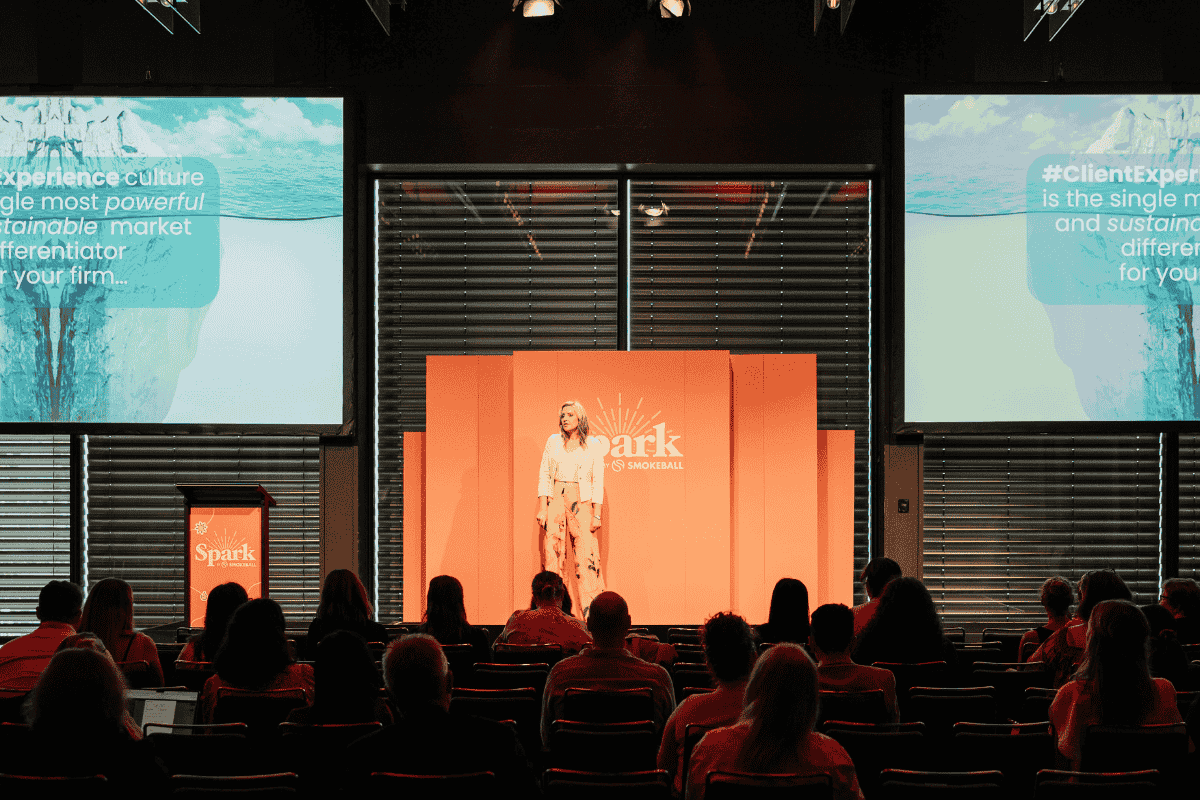
Delivering an exceptional client experience is no longer a “nice to have” for modern law firms; it’s one of the most powerful and sustainable ways to differentiate your practice. The reason is simple: every law firm has technical expertise, but not every firm delivers an experience that makes clients feel heard, valued, supported, and confident.
CX Specialist, Kim Wiegand, shared her knowledge and experience working with law firms at our annual conference, Spark, in February. Here, we will break down Kim’s key insights and turn them into practical, actionable steps that your firm can implement immediately.

In an increasingly competitive market fuelled by online visibility, AI-enabled providers, and rising client expectations, technical skills and legal knowledge are no longer enough. Kim emphasised that most firms spend an exorbitant amount of time upskilling on the technical elements, yet far fewer invest in the experience side of legal service delivery. When a client seeks a lawyer, it is an emotive purchase and firms needs to ensure it is treated as such.
“No one wakes up in the morning and goes, ‘Yes, I get to buy a lawyer today!’. No one. It’s an emotive purchase. I’m getting a divorce, I’m buying a house, I’m in debt, I’m selling or buying a business… whatever it is, it is emotive.”
Clients aren’t simply purchasing knowledge. They’re buying trust, reassurance, and human connection.
Kim highlighted research showing that clients who receive an outstanding experience are:
If you’re looking for a business case for investing in client experience, this is it.
Providing an outstanding client experience isn’t a script or a process. It’s a culture that you need to build and nurture in your firm.
As Kim says:
“Cultural shifts towards putting the client at the center of everything you do are so powerful, because client experience is human.”
She also notes that clients can feel your firm’s internal culture. Even if they have never see it directly, they experience the effects, such as your responsiveness, care, communication, organisation, and reliability. And they notice when something is off.
She shared a powerful example where a firm’s best client stopped working with them after learning that one of the lead partners had left a seven-months-pregnant associate to run a major transaction alone so he could go skiing.
To show the importance of building trust with clients and showing why they trust some lawyers more than others, Kim introduced Maister’s Trust Equation.

She breaks down each component:
Following this equation will help you to build trust with your clients and provide them with a great client experience.
You’ve won the client, now it’s time to get the details of the matter. An intentional and collaborative onboarding helps both you and your client. You get to understand their problem and and it helps to set a positive tone to your client’s experience with your firm from the very start.
“Every single client is different. Their expectations can be different—their needs, their sitatution, their emotional stability. How are you checking in with your client to ensure that you have the matter the way they expected?”
Consider your onboarding through the eyes of your clients: are they getting the chance to state their case properly? Does it make them feel like they’re just another addition to your database?
Consider using a structured intake process that covers:
Be open to setting time to manually do this on a call with a client if required.
Kim shared research showing that the biggest driver of positive client experience is how easy they are to do business with. Some of the attributes that impact this driver include:
You’ve done the work, provided your advice, and helped the client so it’s done now, right? No. One of the best ways to get better at your CX and identify leaky holes is to get feedback. Kim shared further research on law firm clients:
“We know that 96% of customers won’t report or bring a complaint to you. 91% of those won’t come back… They’re not just telling their gran or whatever, they’re telling their friends and people who are in the same demographic as them: your market.”
Technologies like AI can help to make things easier, more streamlined, and faster for law firms. But the one thing it isnt? Human. Kim recognises the powerful role of AI in improving efficiency, but emphasises:
“You don’t get [intimacy] from an AI agent… It can help you be efficient, but it can't replace the human element.”
She explains that yes, clients are open to automation but only as long as it supports a personalised experience.
When planning your firm’s tech stack, see how you can use technology to:
That way, you are giving yourself more time to build trust and connection—the aspects most important to your clients.

Delivering a remarkable client experience isn’t about being perfect. It’s about being human and client-centred.
Kim’s message is clear:
Firms that do this don’t just stand out; they grow faster, win more loyal clients, and build reputations that last.
© 2025 Smokeball Australia Pty Ltd (ABN 46 664 254 200). All Rights Reserved.
Terms of Service | Website Terms of Use | Privacy Policy